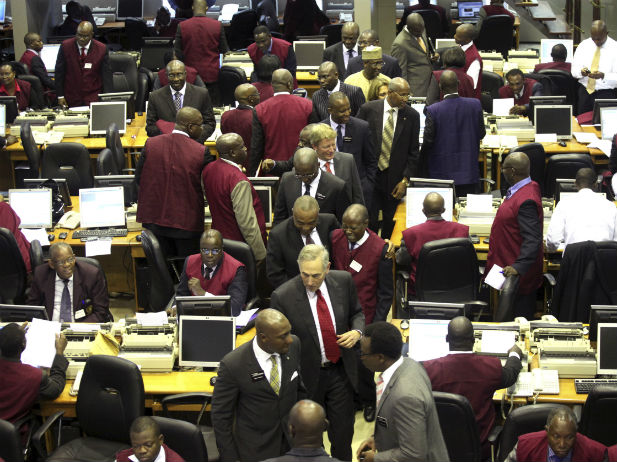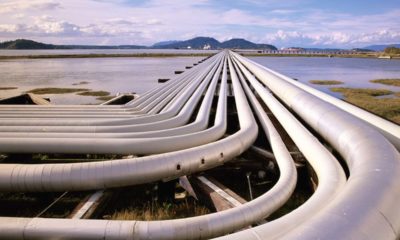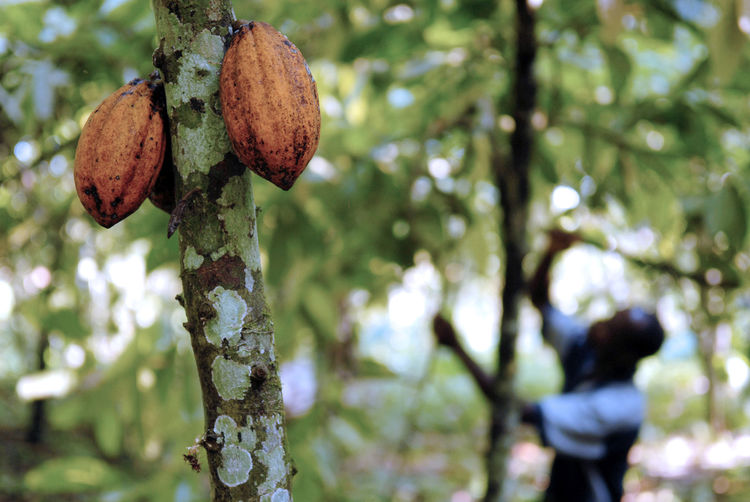The Nigerian Stock Exchange’s market capitalisation advanced by N52bn at the close of trading on the Exchange’s floor on Wednesday after recording losses of various degree on 21 stocks.
The market capitalisation appreciated to N9.418tn from N9.366tn recorded on Tuesday; the NSE All-Share Index also rose to 27,421.83 basis points from 27,272.14 basis points.
A total of 391.374 million shares worth N3.395bn were traded in 3,103 deals.
The market, in the course of trading, realised a maximum index point of 27,751.34 basis points, while the lowest and average index points recorded were 27,272.14 and 27,453.23 basis points, respectively.
The market recorded gains in 19 stocks.
Ikeja Hotel Plc, UAC Property Development Company Plc, International Breweries Plc, Dangote Flour Plc and Wema Bank Plc emerged as the top five gainers.
The shares of Ikeja Hotel appreciated by N0.09 (five per cent) to close at N1.89 from N1.80, while those of UAC Property closed at N3.90 from N3.72, gaining N0.18 (4.84 [per cent).
Similarly, the share price of International Breweries Plc closed at N18.08 from N18.05, gaining N0.83 (4.6 per cent), while that of Dangote Flour rose to N4.17 from N3.99, appreciating by N0.18 (4.51 per cent).
Wema Bank shares closed at N0.70 from N0.68, gaining N0.02 (2.94 per cent).
Other gainers were Okomu Oil Palm Plc, Glaxo SmithKline Consumer Nigeria Plc, Custodian and Allied Plc, Nigerian Breweries Plc, Access Bank Plc, Total Nigeria Plc, Stanbic IBTC Holdings Plc, Ecobank Transnational Incorporated Plc, United Capital Plc, Guaranty Trust Bank Plc, Continental Reinsurance Plc, United Bank for Africa Plc, Nestle Nigeria Plc and Dangote Cement Plc.
On the other hand, 7UP Bottling Company Plc, Cap Plc, Fidson Healthcare Plc, May and Baker Nigeria Plc and Livestock Feeds Plc were the top five losers at the close of trading.
7UP share price depreciated by N11.64 (9.74 per cent) to close at N107.86 from N119.50; while that of Cap closed at N33.40 from N37, losing N3.60 (9.73 per cent).
Fidson Healthcare recorded a drop of N0.09 (4.84 per cent) on its share price to close at N1.77 from N1.86; while May and Baker shares slid to N1.09 from N1.14, losing N0.05 (4.39 per cent).
The share price of Livestock Feeds also fell to N0.93 from N0.97, losing N0.04 (4.12 per cent).
Other losers were Aiico Insurance Plc, Diamond Bank Plc, Skye Bank Plc, PZ Cussons Nigeria Plc, Transnational Corporation of Nigeria Plc, NEM Insurance Company Nigeria Plc, Dangote Sugar Refinery Plc, Sterling Bank Plc, FCMB Group Plc, Fidelity Bank Plc, Eterna Plc, Nascon Allied Industries Plc and Honeywell Flour Mill Plc.
Flour Mills Nigeria Plc, Airline Services and Logistics Plc and Vitafoam Nigeria Plc also recorded losses on their share prices.


 Forex3 weeks ago
Forex3 weeks ago


 Naira2 weeks ago
Naira2 weeks ago
 Billionaire Watch2 weeks ago
Billionaire Watch2 weeks ago






 Naira3 weeks ago
Naira3 weeks ago






 Naira2 weeks ago
Naira2 weeks ago


 Naira1 week ago
Naira1 week ago




 Naira4 weeks ago
Naira4 weeks ago






 Naira1 week ago
Naira1 week ago





















